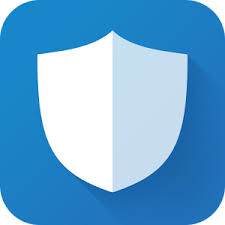Tutorial: 5G Survival Guide
What is 5G?
5G stands for fifth-generation cellular wireless, and the initial standards for it were set at the end of 2017.
5G brings three new aspects to the table: bigger channels (to speed up data), lower latency (to be more responsive), and the ability to connect a lot more devices at once (for sensors and smart devices). It'll also be used for self-driving cars and more internet of things products.
5G has a band spectrum from low, mid, and high. I've seen high band 5G connection do a little over 2,000 mbps. But note, the higher the band the least coverage it'll have.
But there are some major concerns about 5G and the possible exploits. 5G wasn't completely tested for security and rushing things out to public is never a good thing.
Security Risks
The major 5G security concerns are:
- Larger chunks of data traveling back and forth.
- increased load on cloud servers.
- more reliance on internet connection.
- advanced data gathering and surveillance possibilities.
However, despite these threats, with its high speed and low latency, 5G offers plenty of new possibilities for our digital environment. Way beyond its 4G forebear, 5G will make our communication even more rapid and convenient. It is also very likely that we will own more Wi-Fi-connected gadgets than ever before, and our reliance on network connections will increase, too.
How can we enjoy the possibilities 5G brings without the fear of getting hacked?
Encryption and common sense are the primary keywords here. To be safe make sure you do the following;
Use a VPN
This will help keep you safe from eavesdropping. Whether it be a government, law enforcement, or black hat hackers with an IMSI catcher.
Make sure the site you're using has HTTPS
HTTPS is an encrypted site. HTTP are sites that are open for anyone on the same network to see what your doing. Also, some web browsers can be exploited to strip the HTTPS encryption. So it's always a good idea to use a VPN and an extension called HTTPS everywhere. In Firefox, enable HTTPS-ONLY mode. But I would suggest you use Brave as your default browser, it has HTTPS everywhere enabled by default.
Use a trusted, open-source encrypted messenger
Using a encrypted messenger will protect your SMS and video chat communications. I highly suggest an app called Signal. Its end-to-end encrypted, meaning its fully encrypted from one device sending an SMS using Signal to another device using Signal. And it's open source, meaning you can look at the code, make suggestions, and report bugs to the project's community.
Change your passwords
Change passwords everytime you change your smoke alarm battery. Using a password manager makes it easy and makes you more secure. Be sure to not use passwords that relate to things on your social media, it'll be easier to guess. Misspelling words, adding a special character, and numbers together will ensure a good password.
Use 2FA
Using 2 factor authentication [2FA] will keep your accounts more protected, even if someone has your password. But use a app authenticator, not a text message code. An app like Authy will protect your account with a one time token that you type in when you login. If your phone is infected, the black hat hacker can get access to a SMS code and login.
How do I setup 2FA?
For further helpful tips to keep you safe, see my tutorial here:
For my VPN recommendation and what a VPN does, click here:
Stay safe, stay knowledgeable, and share the knowledge to others. Together, we can make the internet great and safe for all.







